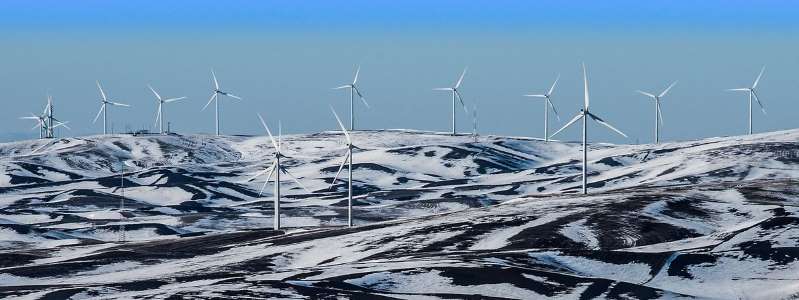![Recipes against the risk of blackout [premium]](/wp-content/uploads/2021/02/rezepte-gegen-die-blackout-gefahr-premium-70ab055.jpg)
Vienna. The latest wake-up call comes from Germany: Europe's energy system is being turned upside down. So far, a few large power plants have provided enough electricity on the continent. This task will soon be taken over by tens of thousands of wind and solar power plants scattered across the country. “If we naively stumble into it, the risk of blackouts increases,” warns Christoph Mayer, head of the “Energy” department at the Offis Institute for Computer Science at the University of Oldenburg. For two years, the mathematician studied with the German Academies of Science what risk the conversion of the electricity system would bring. Result: The risk of blackouts is manageable. But for that to be the case, a lot has to change now.
Small power plants and network operators would also need better protection against hacker attacks. And governments should regulate to ensure that networked household appliances do not all switch on at the same time in the future and thus cause the grid to run into trouble, just because cheap electricity is available on the stock exchange. That is comparatively easy to achieve. But with some recipes against the blackout it should be much more difficult.
Because secure networks also mean more lines, more storage and more intelligent island networks that can bridge blackouts regardless of the overall network. All of this takes time – too much time. It can take decades before important energy projects are approved in Austria (see graphic). If the pace continues as before, the infrastructure for the green energy transition will come too late. But it doesn't have to be that way.
Germany presents
Germany is already taking countermeasures: at the end of January, Parliament gave the green light for the billions in the expansion of the electricity grid. The Bundestag passed an amendment to the law that provides for faster approval procedures for 35 new energy projects. One example is the so-called direct current corridor from Schleswig-Holstein to the Ruhr area. Thousands of kilometers of new lines are to be built in order to get the wind power produced in northern Germany to the industrial centers in the south of the republic.
In Austria, the Green Infrastructure Minister Leonore Gewessler sees no need for new laws to shorten the duration of the proceedings. The turquoise-blue previous government made a somewhat unsuccessful attempt with the site development law. The law is still in place, but no company dares to make use of it. “The law has remained dead right,” says Stephan Schwarzer, energy expert at the Chamber of Commerce (WKÖ).
Instead, he is placing his hopes in the European Union. Because even Brussels has recognized that the tightening of the climate targets and decarbonisation will not be possible without massive investments in infrastructure.
As early as 2013, the EU therefore issued a regulation for the trans-European energy infrastructure, which, in essence, should ensure that important projects can be implemented more quickly. But the companies describe the regulation as “largely ineffective”. In particular, the hurdles to get on the project list are far too high.
Turbo only for half the project?
At the end of December, the Commission presented a revised form of the so-called TEN-E regulation. But the economy is still not satisfied. “The EU has also recognized that our procedures are taking far too long. The measures that she is proposing are half-hearted, “says WKÖ General Secretary Karlheinz Kopf.
The EU wants to continue to equip only cross-border projects with an approval turbo, which makes little sense in view of the decentralization of the power supply throughout Europe. The list of projects in the public interest must also be opened to national projects. But the regulation has even more pitfalls: important electricity storage systems such as the pumped storage power plants in the Alps have to live with the uncertainty that only half of the project can be classified as eligible. “If the pumped storage power plant only has an accelerated procedure for the water pumped up, but not the inflow from streams, two separate approval procedures must take place and the acceleration effect is reversed,” says Kopf.
And it is still not certain who has completely put his project on the list. It is renewed every two years. If the project is not approved by then, it could be pushed off the list – and the whole game starts over.

